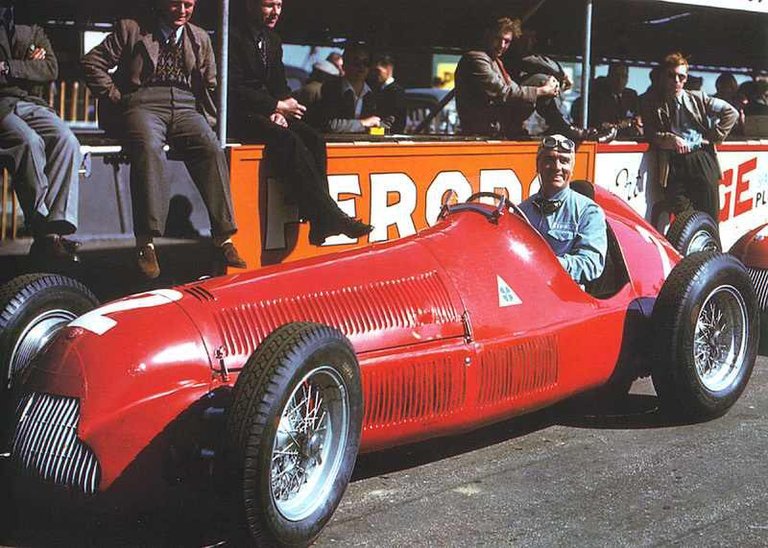
En mi publicación de ayer hablé sobre la gran fiesta de presentación de las escuderías, autos y pilotos que formarán parte del campeonato de la máxima categoría del automovilismo internacional, la Fórmula Uno, en este 2025.
Fue la primera vez que se organizó una presentación de estas características, con la justificación del 75 aniversario del primer torneo de la categoría. Seguramente y gracias a su enorme trascendencia, este show formará parte del calendario a partir del año próximo.
Mucha agua ha pasado bajo el puente desde aquel lejano 1950, cuando por primera vez la FIA (Federación Internacional del Automovilismo) organizó el campeonato mundial de pilotos que, de tal forma, dio inicio a la era moderna del automovilismo deportivo internacional.
Ese año el torneo se disputó a 7 fechas, una de las cuales fue la carrera de las 500 millas de Indianápolis que se desarrolló bajo las reglas de la AAA norteamericana y en la que pocos pilotos de la categoría participaron, por lo tanto, todo se resolvió en tan solo 6 carreras que fueron organizadas bajo las reglas de FIA.
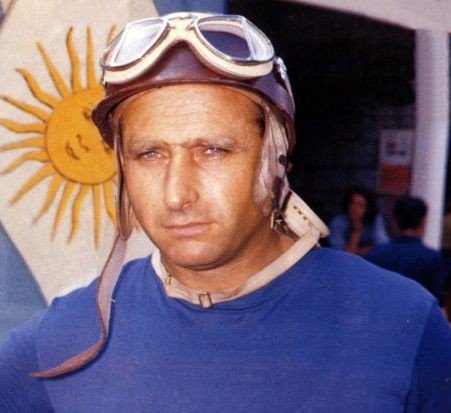
La primera carrera de aquel año se disputó en Silverstone, el gran premio de Gran Bretaña y fue ganada por Giuseppe Farina, a la postre primer campeón mundial. Farina corrió aquel año en un Alfa Romeo 158 con motor de 1,5 litros sobrealimentado que dominó la temporada a voluntad. El italiano ganó 3 carreras y su compañero Juan Manuel Fangio otras 3, el resultado final se resolvió por un cuarto puesto de Farina en el Gran Premio de Bélgica mientras que Fangio abandonó en las 3 carreras que no ganó.
Entre el parque automotor participante, también había motores de 4,5 litros atmosféricos, el reglamento así lo permitía; había monoplazas con motor delantero y ninguno poseía cinturón de seguridad. Los pilotos en su mayoría llevaban gorros de cuero y antiparras y en general solo vestían una camisa y pantalón de calle. Los monoplazas de aquella temporada llegaban a circular a 290 km. por hora.
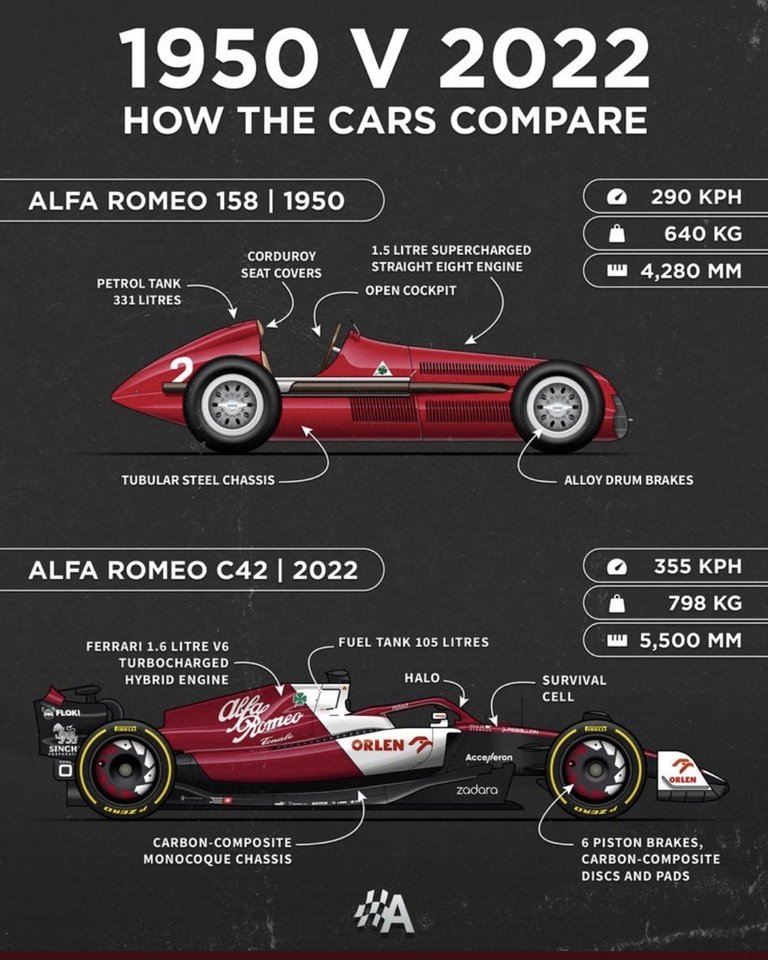
El debut de Ferrari se produjo en la segunda carrera, el Gran Premio de Mónaco donde triunfó el "chueco de Balcarce", nuestro quintuple campeón mundial Juan Manuel Fangio.
Ese año, aunque parezca una exageración, participaron del torneo 30 escuderías entre las cuales se encontraban las ya mencionadas Alfa Romeo y Ferrari, así como Maserati y Gordini entre las más reconocidas y vigentes en la actualidad. Pero hubo otras 27 escuderías que participaron de ese primer campeonato mundial, en su mayoría utilizaban autos fabricados por Alfa Romeo y Talbot-Lago. Como curiosidad adicional, mencionaré que entre tantos equipos había uno argentino denominado Scuderia Achille Varzi, el equipo había sido conformado por el Automóvil Club Argentino que puso como nombre el del piloto italiano fallecido un par de años antes y que fue el promotor de la llegada de Fangio al automovilismo europeo. La escudería argentina utilizaba monoplazas Maserati y tenía como pilotos a José Froilán Gonzalez y Alfredo Pián, ambos argentinos más el italiano Nelo Pagani y el suizo Toni Branca.
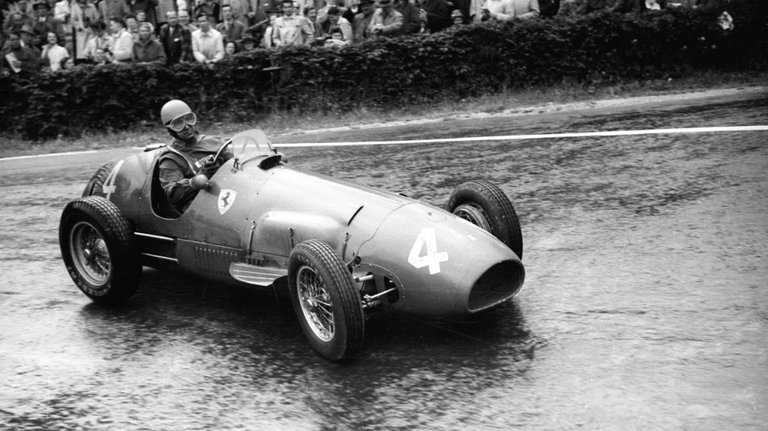
José Froilan Gonzalez fichó para la escudería Ferrari al año siguiente y tuvo el honor de ganar la primera carrera para la mítica casa de Maranello en el Gran Premio de Gran Bretaña ese mismo año 1951. "Don Pepe" como le decían sus allegados, obtuvo 2 victorias y 15 podios en 26 participaciones en la categoría, fue tercero en ese torneo de 1951 y subcampeón en 1954.
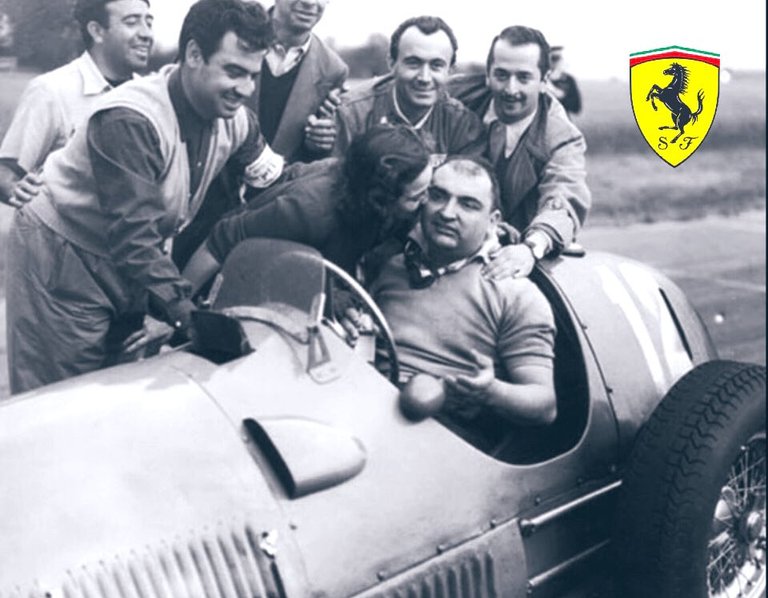
En total, 87 pilotos fueron de la partida en alguna de las 7 carreras puntuables o en las 17 de exhibición que conformaron aquella primera temporada en 1950, punto de partida de un torneo que se convirtió en el máximo exponente del automovilismo deportivo internacional.
1950 - Start of Formula One
In my post yesterday I talked about the big presentation party for the teams, cars, and drivers that will be part of the championship of the highest category of international motorsport, Formula One, in 2025.
It was the first time that a presentation of this nature was organized, with the justification of the 75th anniversary of the first tournament of the category. Surely and thanks to its enormous significance, this show will be part of the calendar starting next year.
A lot of water has passed under the bridge since that distant 1950, when for the first time the FIA (International Automobile Federation) organized the world drivers' championship that, in this way, began the modern era of international motorsports.
That year the tournament was contested over 7 dates, one of which was the Indianapolis 500 race, which was held under the rules of the American AAA and in which few drivers of the category took part, therefore, everything was resolved in only 6 races that were organized under the rules of the FIA.
The first race that year was held at Silverstone, the British Grand Prix, and was won by Giuseppe Farina, who would later become the first world champion. Farina raced that year in an Alfa Romeo 158 with a 1.5-liter supercharged engine that dominated the season at will. The Italian won 3 races and his teammate Juan Manuel Fangio another 3, the final result being resolved by Farina finishing fourth in the Belgian Grand Prix while Fangio retired in the 3 races he did not win.
Among the participating vehicles, there were also 4.5-liter naturally aspirated engines, as the regulations allowed; There were single-seater cars with front engines and none of them had seat belts. The drivers mostly wore leather caps and goggles and generally only wore a shirt and trousers. The cars of that season could travel at speeds of 290 km/h.
Ferrari's debut took place in the second race, the Monaco Grand Prix, where the "Chueco de Balcarce" (Balcarce's crook) triumphed, our five-time world champion Juan Manuel Fangio.
That year, although it may seem an exaggeration, 30 teams participated in the tournament, including the aforementioned Alfa Romeo and Ferrari, as well as Maserati and Gordini, among the most recognized and current ones. But there were another 27 teams that participated in that first world championship, most of them using cars manufactured by Alfa Romeo and Talbot-Lago. As an additional curiosity, I will mention that among so many teams there was an Argentine one called Scuderia Achille Varzi, the team had been formed by the Argentine Automobile Club named it after the Italian driver who had died a couple of years before and who was the promoter of Fangio's arrival in European motor racing. The Argentine team used Maserati single-seaters and had as drivers José Froilán Gonzalez and Alfredo Pián, both Argentines, plus the Italian Nelo Pagani and the Swiss Toni Branca.
José Froilan Gonzalez signed for the Ferrari team the following year and had the honor of winning the first race for the legendary Maranello manufacturer at the British Grand Prix that same year, 1951. "Don Pepe," as his friends called him, achieved 2 victories and 15 podiums in 26 participations in the category. He was third in that 1951 tournament and runner-up in 1954.
In total, 87 drivers participated in one of the 7 scoring races or in the 17 exhibition races that made up that first season in 1950, the starting point of a tournament that became the greatest exponent of international motor racing.
Héctor Gugliermo
@hosgug